- Home
- William Shakespeare
The Winter's Tale Page 2
The Winter's Tale Read online
Page 2
Conversely, despite the Catholicism of James' queen and the king's various attempts to match his children to clients of Spain, the residual English hostility to all things Spanish, dating back to the Armada and beyond, had not gone away. In these circumstances, it seems eminently plausible that on deciding to dramatize a story about the kings of Sicilia and Bohemia, and knowing that the play would at some point go into the court repertoire, Shakespeare thought it would be politic to make the monarch with Spanish as opposed to Rudolfine associations the one who is irrational, cruel, and blasphemous. It is not that Leontes is in any sense a representation of Philip or Polixenes of Rudolf, but rather that extreme tact was required in the invocation of the names of European kingdoms.
Shakespeare's tact toward Bohemia, a synecdoche for the Austro-Germanic Habsburg territories, was indeed such that The Winter's Tale could be played at court without embarrassment during the 1612-13 festivities in celebration of the wedding of King James' daughter Elizabeth to the Habsburg princeling Frederick the Elector Palatine--who, as it happens, would later become King of Bohemia. Life imitates art: like Perdita, Elizabeth would become known as the "winter queen" in Bohemia.
Whether or not geopolitical sensitivity lay behind Shakespeare's transposition of Sicilia and Bohemia, The Winter's Tale can still be thought of as a play that works on a north-south axis. The weird temporal syncretism of the play enacts the early modern rebirth of classical civilization: Apollo thunders and Ovid's Pygmalion is reborn as Giulio Romano; the setting moves between the temple of the Delphic oracle on a balmy Greek island, a very English-seeming sheep-shearing feast, and a private chapel reached via a picture gallery and housing a Madonna-like statue. The essential geographical structure, meanwhile, is an opposition between a hot-blooded, court-dominated--and perhaps implicitly Catholic--south, and a more relaxed, temperate north in which ordinary people (shepherd and clown) have a voice, as they do in the Protestant world where the Bible is available in the vernacular.
LIVING ART
One of the best ways of discovering Shakespeare's core concerns in a play is to consider his major additions to his sources: it is a fair assumption that he is most himself when he departs from his originals. As one would expect from Pandosto, Leontes is easily the largest role in the play, twice as long as any other. But the next two most sizable parts--added together, they equal that of Leontes in length--are Camillo and Paulina. The figure of Leontes' honest counselor greatly expands the role of the king's cupbearer in Pandosto, while Paulina, Hermione's preserver and Leontes' conscience, has no equivalent in the source. The prominence of these roles suggests that the play is especially interested in the relationship between absolute power, with its potential to turn to tyranny, and the role of the wise counselor. How far can an adviser, or for that matter a playwright whose works are performed at court, go in speaking truths that their rulers might not want to hear? This was a perennial concern in the Elizabethan and Jacobean era.
The court of King James was different from that of Queen Elizabeth, not least because there was a royal family. Negotiations to find the right husband for the king's daughter were ongoing at the time of the play's composition and first court performance. Like the Bohemian connection discussed above, this context is in the hinterland of the play's origin. It should not lead us to read the drama as a direct allegory of contemporary diplomacy. Leontes is in no sense a representation of King James. Besides, among the things that make the play a romance is the delightful representation of paternal informality and intimacy in the exchanges with Mamillius in the opening court scene. Real kings did not publicly mix the roles of patriarch and playmate in this way.
In Greene's Pandosto, when the Perdita figure arrives incognito at court near the climax of the story, the desiring eye of her father falls upon her, raising the specter of royal incest. One of Paulina's roles in The Winter's Tale is to divert Leontes from any thought of this kind: "Your eye hath too much youth in't," she remarks, reminding him that even in middle age his dead queen was more beautiful "Than what you look on now." Earlier in the same scene, Paulina has counseled the king against remarriage, eliciting the response:
Thou speak'st truth.
No more such wives: therefore, no wife. One worse,
And better used, would make her sainted spirit
Again possess her corpse, and on this stage --
Where we offenders now -- appear soul-vexed,
And begin, 'Why to me?'
These lines brilliantly anticipate the moment when, thanks to the dramaturgical art of Paulina, the "sainted spirit" of Hermione really does appear to have a soul breathed back into it as she walks again on that same "stage."
In Pandosto the wronged queen does not return to life. The reanimation of what Leontes takes to be Hermione's statue is Shakespeare's invention. The wonder-filled final scene puts a seemingly life-giving art into the hands of Paulina. That art dramatizes the magical power of theater itself so that we in the audience, like the characters on stage, awaken our faith. The many-layered quality of the illusion--a boy actor pretending to be a female character; Hermione, who is herself pretending to be a statue--takes Shakespeare's art to an extreme level of self-consciousness. Fittingly, the scene is also an allusion to Ovid, the most self-conscious artist among Shakespeare's literary models.
In book ten of the Metamorphoses, the artist Pygmalion carves an ivory statue so realistic that it seems to be a real girl, so beautiful that he falls in love with it. He desperately wants to believe it is real and there are moments when the perfection of the art is such that the statue does seem to be struggling into life. With a little assistance from the goddess Venus, a kiss then animates the statue in a striking reversal of the usual Ovidian metamorphic pattern in which people are turned into things or animals. At a profound level, Pygmalion is a figure of Ovid himself: the artist who transforms mere words into living forms.
Shakespeare learned from Ovid's Pygmalion both an idea and a style. If you want something badly enough and you believe in it hard enough, you will eventually get it: though tragedy denies this possibility, comedy affirms it. This is the illusion that theater can foster. Ovid showed Shakespeare that the way to evoke this leap of faith is through pinpricks of sensation. The progression in the animation of Pygmalion's statue is both precise and sensuous: blood pulses through the veins, the lips respond, the ivory face flushes. Correspondingly, Leontes contrasts the warm life his queen once had with the coldness of the statue, but then he seems to see blood in the veins and warmth upon the lips. And when she descends and embraces him, she is warm.
At the beginning of the play Leontes complains that Hermione's body contact with Polixenes is "Too hot, too hot!"--he wants her to be frigidly chaste, even though she is pregnant. His jealous look is like that of the basilisk or the gorgon Medusa: he turns his wife to stone. In the final act, this metaphor becomes a metamorphosis as Paulina conjures up the illusion of Hermione's depetrification. The transformation is triumphantly realized on stage both linguistically and visually. "Does not the stone rebuke me / For being more stone than it?" asks Leontes, when confronted with the statue. The hardened image of his wife forces him to turn his gaze inward upon his own hard heart. The play ends with the melting of that heart and the rekindling of love, with its concordant release of Hermione back into softness, warmth, and life.
We know in our heads that we are not really watching a statue coming to life. Yet in a good production, at the moment of awakening we feel in our hearts that we are. The magic of the drama occurs in a strange but deeply satisfying space between the two poles of reality and illusion. Metamorphosis is a kind of translation that occurs in the passage from one state to another. Ovid's world, which is also evoked by Perdita's comparison of herself to Proserpina, goddess of spring, shuttles between human passions and natural phenomena. Shakespeare carried the magic of that world across into the medium of theater, where everything is illusion, but somehow--as he put it in the alternative title of another of his la
st plays, Henry VIII--"All Is True."
When Perdita, whose name means "lost one," is restored to her father, the oracle is fulfilled and there is some atonement for the death of Mamillius. Not, however, full restoration, for Mamillius himself will not return. The boy actor who played the part would almost certainly have doubled as Perdita in the second half of the play, visually transforming the dead son into a living daughter. Polixenes' son Florizel also stands in for Mamillius: he grows into what Leontes' son might have become. When he and Perdita are joined in marriage, the two kings and their kingdoms are united. Leontes has to accept that he will live on only through the female line. This is an appropriate punishment, given his earlier rejection of the female for having come between him and his "brother."
It will perhaps seem harsh to speak of punishment after the delights of the pastoral scene, the benign mischief of Autolycus, and the wonder of the moment when the supposed statue of Hermione is brought back to life. To do so is to resemble the Paulina who browbeats Leontes into maintaining his penance for sixteen years. When she finally softens and lets him into her art gallery, surely we, too, need to let go of our reason and our moral judgment. "It is required," as Paulina puts it, that we awake our faith. But can so much suffering evaporate in an instant of theatrical magic? Hermione's face is scarred with the marks of time, the wrinkles accumulated in her sixteen years' seclusion. And not even the joys of the impending union of the two houses can bring back the child whose "smutched" nose his father has so tenderly wiped in the first act.
ABOUT THE TEXT
Shakespeare endures through history. He illuminates later times as well as his own. He helps us to understand the human condition. But he cannot do this without a good text of the plays. Without editions there would be no Shakespeare. That is why every twenty years or so throughout the last three centuries there has been a major new edition of his complete works. One aspect of editing is the process of keeping the texts up to date--modernizing the spelling, punctuation, and typography (though not, of course, the actual words), providing explanatory notes in the light of changing educational practices (a generation ago, most of Shakespeare's classical and biblical allusions could be assumed to be generally understood, but now they can't).
Because Shakespeare did not personally oversee the publication of his plays, with some plays there are major editorial difficulties. Decisions have to be made as to the relative authority of the early printed editions, the pocket format "Quartos" published in Shakespeare's lifetime and the elaborately produced "First Folio" text of 1623, the original "Complete Works" prepared for the press after his death by Shakespeare's fellow actors, the people who knew the plays better than anyone else. The Winter's Tale, however, exists only in a Folio text that is reasonably well printed. The following notes highlight various aspects of the editorial process and indicate conventions used in the text of this edition:
Lists of Parts are supplied in the First Folio for only six plays: The Winter's Tale is one of them, so the list here is a lightly edited version of Folio's "The Names of the Actors." Capitals indicate that part of the name which is used for speech headings in the script (thus "LEONTES, King of Sicilia").
Locations are provided by the Folio for only two plays, of which The Winter's Tale is not one. Eighteenth-century editors, working in an age of elaborately realistic stage sets, were the first to provide detailed locations ("another part of the palace"). Given that Shakespeare wrote for a bare stage and often an imprecise sense of place, we have relegated locations to the explanatory notes at the foot of the page, where they are given at the beginning of each scene where the imaginary location is different from the one before. In the case of The Winter's Tale, the key aspect of location is the movement between Sicilia and Bohemia.
Act and Scene Divisions were provided in the Folio in a much more thoroughgoing way than in the Quartos. Sometimes, however, they were erroneous or omitted; corrections and additions supplied by editorial tradition are indicated by square brackets. Five-act division is based on a classical model, and act breaks provided the opportunity to replace the candles in the indoor Blackfriars playhouse which the King's Men used after 1608, but Shakespeare did not necessarily think in terms of a five-part structure of dramatic composition. The Folio convention is that a scene ends when the stage is empty. Nowadays, partly under the influence of film, we tend to consider a scene to be a dramatic unit that ends with either a change of imaginary location or a significant passage of time within the narrative. Shakespeare's fluidity of composition accords well with this convention, so in addition to act and scene numbers we provide a running scene count in the right margin at the beginning of each new scene, in the typeface used for editorial directions. Where there is a scene break caused by a momentary bare stage, but the location does not change and extra time does not pass, we use the convention running scene continues. There is inevitably a degree of editorial judgment in making such calls, but the system is very valuable in suggesting the pace of the plays.
Speakers' Names are often inconsistent in Folio. We have regularized speech headings, but retained an element of deliberate inconsistency in entry directions, in order to give the flavor of Folio.
Verse is indicated by lines that do not run to the right margin and by capitalization of each line. The Folio printers sometimes set verse as prose, and vice versa (either out of misunderstanding or for reasons of space). We have silently corrected in such cases, although in some instances there is ambiguity, in which case we have leaned toward the preservation of Folio layout. Folio sometimes uses contraction ("turnd" rather than "turned") to indicate whether or not the final "-ed" of a past participle is sounded, an area where there is variation for the sake of the five-beat iambic pentameter rhythm. We use the convention of a grave accent to indicate sounding (thus "turned" would be two syllables), but would urge actors not to overstress. In cases where one speaker ends with a verse half line and the next begins with the other half of the pentameter, editors since the late eighteenth century have indented the second line. We have abandoned this convention, since the Folio does not use it, and nor did actors' cues in the Shakespearean theater. An exception is made when the second speaker actively interrupts or completes the first speaker's sentence.
Spelling is modernized, but older forms are very occasionally maintained where necessary for rhythm or aural effect.
Punctuation in Shakespeare's time was as much rhetorical as grammatical. "Colon" was originally a term for a unit of thought in an argument. The semicolon was a new unit of punctuation (some of the Quartos lack them altogether). We have modernized punctuation throughout, but have given more weight to Folio punctuation than many editors, since, though not Shakespearean, it reflects the usage of his period. In particular, we have used the colon far more than many editors: it is exceptionally useful as a way of indicating how many Shakespearean speeches unfold clause by clause in a developing argument that gives the illusion of enacting the process of thinking in the moment. We have also kept in mind the origin of punctuation in classical times as a way of assisting the actor and orator: the comma suggests the briefest of pauses for breath, the colon a middling one, and a full stop or period a longer pause. Semicolons, by contrast, belong to an era of punctuation that was only just coming in during Shakespeare's time and that is coming to an end now: we have accordingly used them only where they occur in our copy texts (and not always then). Dashes are sometimes used for parenthetical interjections where the Folio has brackets. They are also used for interruptions and changes in train of thought. Where a change of addressee occurs within a speech, we have used a dash preceded by a full stop (or occasionally another form of punctuation). Often the identity of the respective addressees is obvious from the context. When it is not, this has been indicated in a marginal stage direction.
Entrances and Exits are fairly thorough in Folio, which has accordingly been followed as faithfully as possible. Where characters are omitted or corrections are necessary, this is indicated b
y square brackets (e.g. "[and Attendants]"). Exit is sometimes silently normalized to Exeunt and Manet anglicized to "remains." We trust Folio positioning of entrances and exits to a greater degree than most editors.
Editorial Stage Directions such as stage business, asides, indications of addressee and of characters' position on the gallery stage are used only sparingly in Folio. Other editions mingle directions of this kind with original Folio and Quarto directions, sometimes marking them by means of square brackets. We have sought to distinguish what could be described as directorial interventions of this kind from Folio-style directions (either original or supplied) by placing them in the right margin in a different typeface. There is a degree of subjectivity about which directions are of which kind, but the procedure is intended as a reminder to the reader and the actor that Shakespearean stage directions are often dependent upon editorial inference alone and are not set in stone. We also depart from editorial tradition in sometimes admitting uncertainty and thus printing permissive stage directions, such as an Aside? (often a line may be equally effective as an aside or a direct address--it is for each production or reading to make its own decision) or a may exit or a piece of business placed between arrows to indicate that it may occur at various different moments within a scene.
Line Numbers in the left margin are editorial, for reference and to key the explanatory and textual notes.
Explanatory Notes at the foot of each page explain allusions and gloss obsolete and difficult words, confusing phraseology, occasional major textual cruxes, and so on. Particular attention is given to non-standard usage, bawdy innuendo, and technical terms (e.g. legal and military language). Where more than one sense is given, commas indicate shades of related meaning, slashes alternative or double meanings.
Textual Notes at the end of the play indicate major departures from the Folio. They take the following form: the reading of our text is given in bold and its source given after an equals sign, with "F2" indicating a reading that derives from the Second Folio of 1632 and "Ed" one that derives from the subsequent editorial tradition. The rejected Folio ("F") reading is then given. Thus, for example: "3.3.114 made = Ed. F = mad" means that at Act 3 Scene 3 line 114, the Folio compositor has mistakenly printed "mad" and we have followed editorial tradition in correcting to "made."

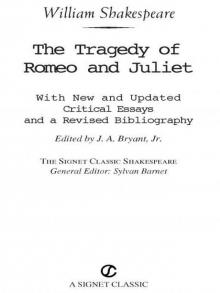 Romeo and Juliet
Romeo and Juliet As You Like It (Folger Shakespeare Library)
As You Like It (Folger Shakespeare Library)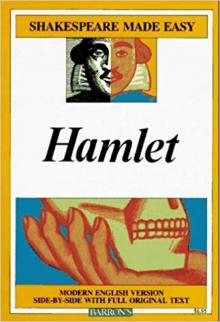 Hamlet
Hamlet Richard II (Folger Shakespeare Library)
Richard II (Folger Shakespeare Library)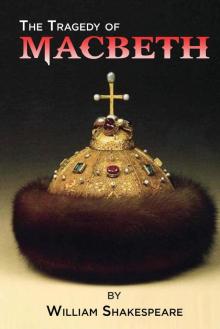 Macbeth
Macbeth Henry V
Henry V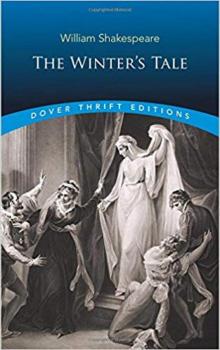 The Winter's Tale
The Winter's Tale The Taming of the Shrew
The Taming of the Shrew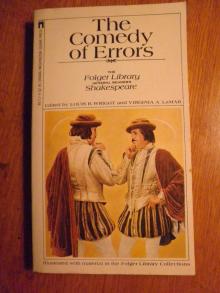 The Comedy of Errors
The Comedy of Errors King Lear (Folger Shakespeare Library)
King Lear (Folger Shakespeare Library)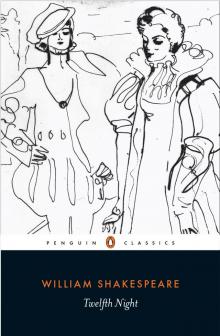 Twelfth Night
Twelfth Night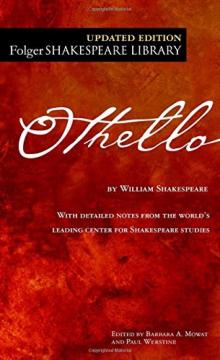 Othello
Othello The Two Gentlemen of Verona
The Two Gentlemen of Verona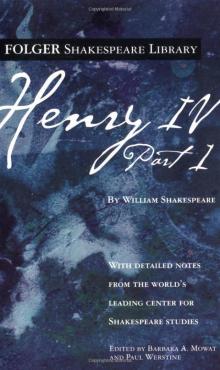 Henry IV, Part 1 (Folger Shakespeare Library)
Henry IV, Part 1 (Folger Shakespeare Library) King John/Henry VIII (Signet Classics)
King John/Henry VIII (Signet Classics)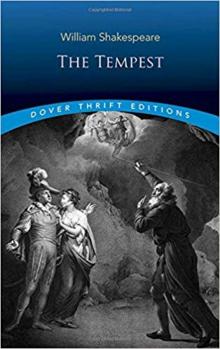 The Tempest
The Tempest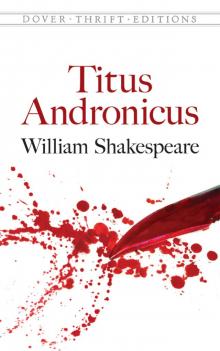 Titus Andronicus (Dover Publications)
Titus Andronicus (Dover Publications)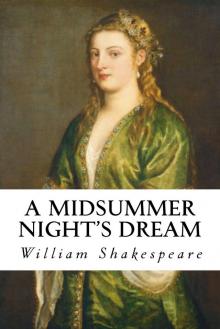 A Midsummer Night's Dream
A Midsummer Night's Dream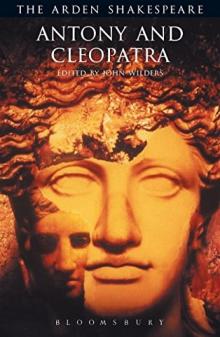 Antony and Cleopatra (Arden Shakespeare: Third Series)
Antony and Cleopatra (Arden Shakespeare: Third Series)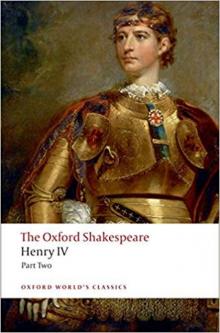 The Oxford Shakespeare: Henry IV, Part 2 (Oxford World's Classics)
The Oxford Shakespeare: Henry IV, Part 2 (Oxford World's Classics)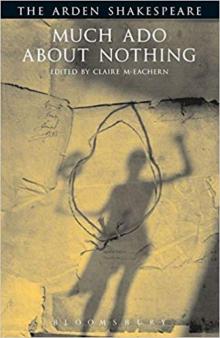 Much Ado About Nothing (Arden Shakespeare: Third Series)
Much Ado About Nothing (Arden Shakespeare: Third Series) All's Well That Ends Well
All's Well That Ends Well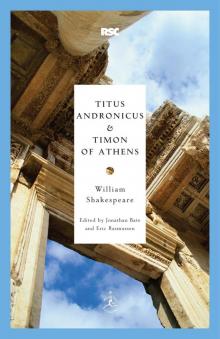 Titus Andronicus & Timon of Athens
Titus Andronicus & Timon of Athens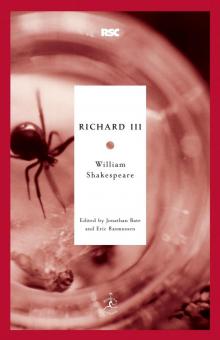 Richard III (Modern Library Classics)
Richard III (Modern Library Classics) Coriolanus
Coriolanus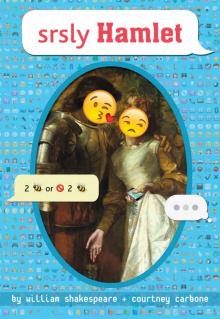 srsly Hamlet (OMG Shakespeare)
srsly Hamlet (OMG Shakespeare) The Merchant of Venice
The Merchant of Venice Richard III
Richard III Richard II
Richard II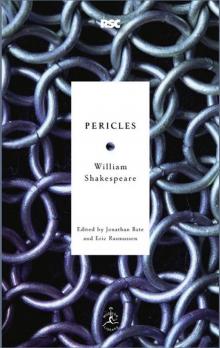 Pericles
Pericles As You Like It
As You Like It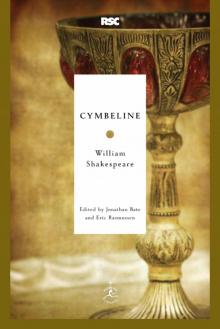 Cymbeline
Cymbeline Alls Wel that ends Well
Alls Wel that ends Well YOLO Juliet
YOLO Juliet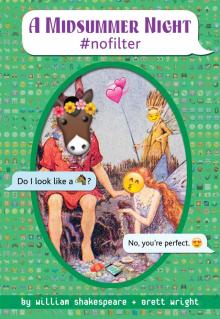 A Midsummer Night #nofilter
A Midsummer Night #nofilter Love's Labour's Lost
Love's Labour's Lost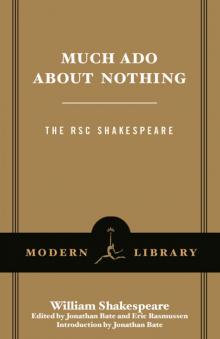 Much Ado About Nothing
Much Ado About Nothing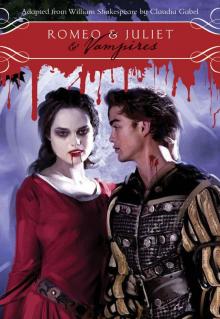 Romeo & Juliet & Vampires
Romeo & Juliet & Vampires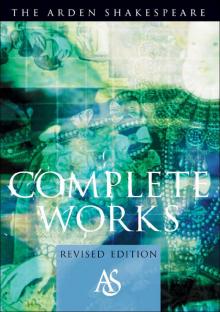 The Arden Shakespeare Complete Works
The Arden Shakespeare Complete Works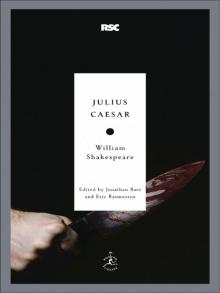 Julius Caesar
Julius Caesar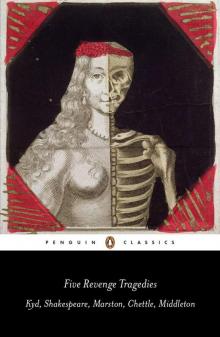 Five Revenge Tragedies: The Spanish Tragedy, Hamlet, Antonio's Revenge, The Tragedy of Hoffman, The Revenger's Tragedy (Penguin Classics)
Five Revenge Tragedies: The Spanish Tragedy, Hamlet, Antonio's Revenge, The Tragedy of Hoffman, The Revenger's Tragedy (Penguin Classics)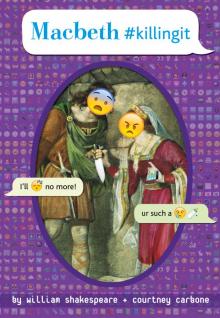 Macbeth #killingit
Macbeth #killingit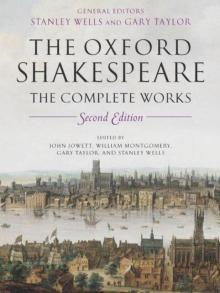 The Oxford Shakespeare: The Complete Works
The Oxford Shakespeare: The Complete Works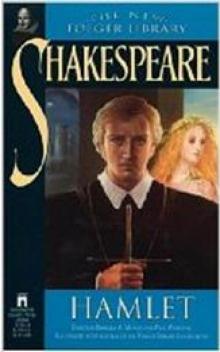 Hamlet, Prince of Denmark (Collins edition)
Hamlet, Prince of Denmark (Collins edition)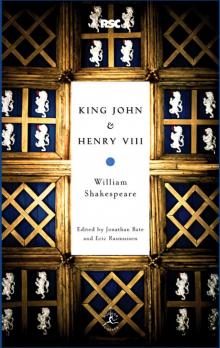 King John & Henry VIII
King John & Henry VIII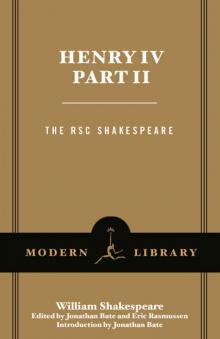 Henry IV, Part 2
Henry IV, Part 2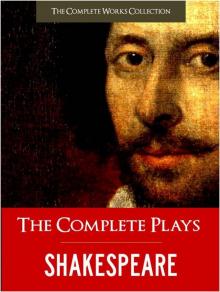 Complete Plays, The
Complete Plays, The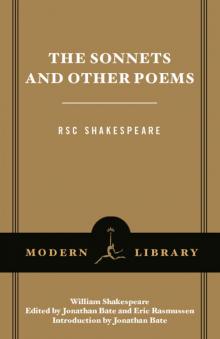 The Sonnets and Other Poems
The Sonnets and Other Poems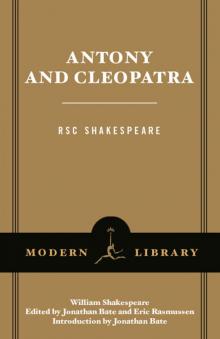 Antony and Cleopatra
Antony and Cleopatra Henry IV, Part 1
Henry IV, Part 1 Is This a Dagger Which I See Before Me?
Is This a Dagger Which I See Before Me? The Complete Works of William Shakespeare In Plain and Simple English (Translated)
The Complete Works of William Shakespeare In Plain and Simple English (Translated) The Sonnets
The Sonnets